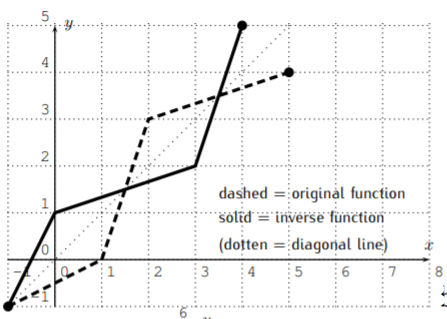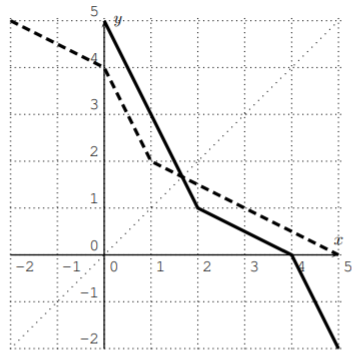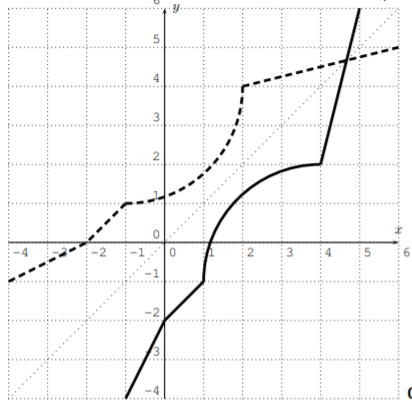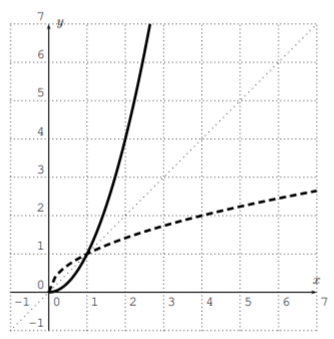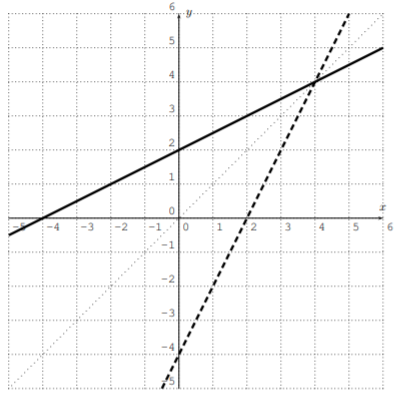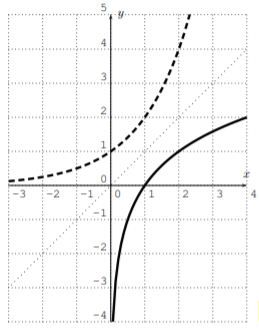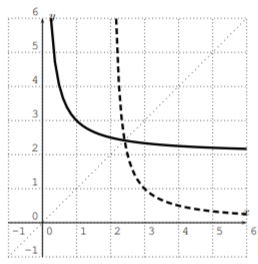7.3: Exercises
- Page ID
- 48991
\( \newcommand{\vecs}[1]{\overset { \scriptstyle \rightharpoonup} {\mathbf{#1}} } \)
\( \newcommand{\vecd}[1]{\overset{-\!-\!\rightharpoonup}{\vphantom{a}\smash {#1}}} \)
\( \newcommand{\dsum}{\displaystyle\sum\limits} \)
\( \newcommand{\dint}{\displaystyle\int\limits} \)
\( \newcommand{\dlim}{\displaystyle\lim\limits} \)
\( \newcommand{\id}{\mathrm{id}}\) \( \newcommand{\Span}{\mathrm{span}}\)
( \newcommand{\kernel}{\mathrm{null}\,}\) \( \newcommand{\range}{\mathrm{range}\,}\)
\( \newcommand{\RealPart}{\mathrm{Re}}\) \( \newcommand{\ImaginaryPart}{\mathrm{Im}}\)
\( \newcommand{\Argument}{\mathrm{Arg}}\) \( \newcommand{\norm}[1]{\| #1 \|}\)
\( \newcommand{\inner}[2]{\langle #1, #2 \rangle}\)
\( \newcommand{\Span}{\mathrm{span}}\)
\( \newcommand{\id}{\mathrm{id}}\)
\( \newcommand{\Span}{\mathrm{span}}\)
\( \newcommand{\kernel}{\mathrm{null}\,}\)
\( \newcommand{\range}{\mathrm{range}\,}\)
\( \newcommand{\RealPart}{\mathrm{Re}}\)
\( \newcommand{\ImaginaryPart}{\mathrm{Im}}\)
\( \newcommand{\Argument}{\mathrm{Arg}}\)
\( \newcommand{\norm}[1]{\| #1 \|}\)
\( \newcommand{\inner}[2]{\langle #1, #2 \rangle}\)
\( \newcommand{\Span}{\mathrm{span}}\) \( \newcommand{\AA}{\unicode[.8,0]{x212B}}\)
\( \newcommand{\vectorA}[1]{\vec{#1}} % arrow\)
\( \newcommand{\vectorAt}[1]{\vec{\text{#1}}} % arrow\)
\( \newcommand{\vectorB}[1]{\overset { \scriptstyle \rightharpoonup} {\mathbf{#1}} } \)
\( \newcommand{\vectorC}[1]{\textbf{#1}} \)
\( \newcommand{\vectorD}[1]{\overrightarrow{#1}} \)
\( \newcommand{\vectorDt}[1]{\overrightarrow{\text{#1}}} \)
\( \newcommand{\vectE}[1]{\overset{-\!-\!\rightharpoonup}{\vphantom{a}\smash{\mathbf {#1}}}} \)
\( \newcommand{\vecs}[1]{\overset { \scriptstyle \rightharpoonup} {\mathbf{#1}} } \)
\( \newcommand{\vecd}[1]{\overset{-\!-\!\rightharpoonup}{\vphantom{a}\smash {#1}}} \)
\(\newcommand{\avec}{\mathbf a}\) \(\newcommand{\bvec}{\mathbf b}\) \(\newcommand{\cvec}{\mathbf c}\) \(\newcommand{\dvec}{\mathbf d}\) \(\newcommand{\dtil}{\widetilde{\mathbf d}}\) \(\newcommand{\evec}{\mathbf e}\) \(\newcommand{\fvec}{\mathbf f}\) \(\newcommand{\nvec}{\mathbf n}\) \(\newcommand{\pvec}{\mathbf p}\) \(\newcommand{\qvec}{\mathbf q}\) \(\newcommand{\svec}{\mathbf s}\) \(\newcommand{\tvec}{\mathbf t}\) \(\newcommand{\uvec}{\mathbf u}\) \(\newcommand{\vvec}{\mathbf v}\) \(\newcommand{\wvec}{\mathbf w}\) \(\newcommand{\xvec}{\mathbf x}\) \(\newcommand{\yvec}{\mathbf y}\) \(\newcommand{\zvec}{\mathbf z}\) \(\newcommand{\rvec}{\mathbf r}\) \(\newcommand{\mvec}{\mathbf m}\) \(\newcommand{\zerovec}{\mathbf 0}\) \(\newcommand{\onevec}{\mathbf 1}\) \(\newcommand{\real}{\mathbb R}\) \(\newcommand{\twovec}[2]{\left[\begin{array}{r}#1 \\ #2 \end{array}\right]}\) \(\newcommand{\ctwovec}[2]{\left[\begin{array}{c}#1 \\ #2 \end{array}\right]}\) \(\newcommand{\threevec}[3]{\left[\begin{array}{r}#1 \\ #2 \\ #3 \end{array}\right]}\) \(\newcommand{\cthreevec}[3]{\left[\begin{array}{c}#1 \\ #2 \\ #3 \end{array}\right]}\) \(\newcommand{\fourvec}[4]{\left[\begin{array}{r}#1 \\ #2 \\ #3 \\ #4 \end{array}\right]}\) \(\newcommand{\cfourvec}[4]{\left[\begin{array}{c}#1 \\ #2 \\ #3 \\ #4 \end{array}\right]}\) \(\newcommand{\fivevec}[5]{\left[\begin{array}{r}#1 \\ #2 \\ #3 \\ #4 \\ #5 \\ \end{array}\right]}\) \(\newcommand{\cfivevec}[5]{\left[\begin{array}{c}#1 \\ #2 \\ #3 \\ #4 \\ #5 \\ \end{array}\right]}\) \(\newcommand{\mattwo}[4]{\left[\begin{array}{rr}#1 \amp #2 \\ #3 \amp #4 \\ \end{array}\right]}\) \(\newcommand{\laspan}[1]{\text{Span}\{#1\}}\) \(\newcommand{\bcal}{\cal B}\) \(\newcommand{\ccal}{\cal C}\) \(\newcommand{\scal}{\cal S}\) \(\newcommand{\wcal}{\cal W}\) \(\newcommand{\ecal}{\cal E}\) \(\newcommand{\coords}[2]{\left\{#1\right\}_{#2}}\) \(\newcommand{\gray}[1]{\color{gray}{#1}}\) \(\newcommand{\lgray}[1]{\color{lightgray}{#1}}\) \(\newcommand{\rank}{\operatorname{rank}}\) \(\newcommand{\row}{\text{Row}}\) \(\newcommand{\col}{\text{Col}}\) \(\renewcommand{\row}{\text{Row}}\) \(\newcommand{\nul}{\text{Nul}}\) \(\newcommand{\var}{\text{Var}}\) \(\newcommand{\corr}{\text{corr}}\) \(\newcommand{\len}[1]{\left|#1\right|}\) \(\newcommand{\bbar}{\overline{\bvec}}\) \(\newcommand{\bhat}{\widehat{\bvec}}\) \(\newcommand{\bperp}{\bvec^\perp}\) \(\newcommand{\xhat}{\widehat{\xvec}}\) \(\newcommand{\vhat}{\widehat{\vvec}}\) \(\newcommand{\uhat}{\widehat{\uvec}}\) \(\newcommand{\what}{\widehat{\wvec}}\) \(\newcommand{\Sighat}{\widehat{\Sigma}}\) \(\newcommand{\lt}{<}\) \(\newcommand{\gt}{>}\) \(\newcommand{\amp}{&}\) \(\definecolor{fillinmathshade}{gray}{0.9}\)Use the horizontal line test to determine if the function is one-to-one.
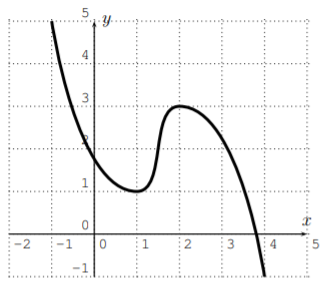
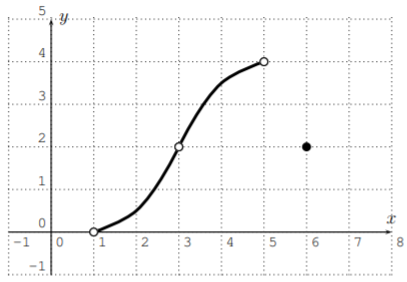
- \(f(x)=x^2+2x+5\)
- \(f(x)=x^2-14 x+29\)
- \(f(x)=x^3-5x^2\)
- \(f(x)=\dfrac{x^2}{x^2-3}\)
- \(f(x)=\sqrt{x+2}\)
- \(f(x)=\sqrt{|x+2|}\)
- Answer
-
- no (that is: the function is not one-to-one)
- yes
- no
- no
- no
- no
- yes
- no
Find the inverse of the function \(f\) and check your solution.
- \(f(x)=4x+9\)
- \(f(x)=-8x-3\)
- \(f(x)=\sqrt{x+8}\)
- \(f(x)=\sqrt{3x+7}\)
- \(f(x)=6\cdot \sqrt{-x-2}\)
- \(f(x)=x^3\)
- \(f(x)=(2x+5)^3\)
- \(f(x)=2\cdot x^3+5\)
- \(f(x)=\dfrac{1}{x}\)
- \(f(x)=\dfrac{1}{x-1}\)
- \(f(x)=\dfrac{1}{\sqrt{x-2}}\)
- \(f(x)=\dfrac{-5}{4-x}\)
- \(f(x)=\dfrac{x}{x+2}\)
- \(f(x)=\dfrac{3x}{x-6}\)
- \(f(x)=\dfrac{x+2}{x+3}\)
- \(f(x)=\dfrac{7-x}{x-5}\)
- \(f\) given by the table: \(\begin{array}{|c||c|c|c|c|c|c|}
\hline x & 2 & 4 & 6 & 8 & 10 & 12 \\
\hline \hline f(x) & 3 & 7 & 1 & 8 & 5 & 2 \\
\hline
\end{array} \)
- Answer
-
- \(f^{-1}(x)=\dfrac{x-9}{4}\)
- \(f^{-1}(x)=-\dfrac{x+3}{8}\)
- \(f^{-1}(x)=x^{2}-8\)
- \(f^{-1}(x)=\dfrac{x^{2}-7}{3}\)
- \(f^{-1}(x)=-\left(\dfrac{x}{6}\right)^{2}-2=\dfrac{-x^{2}-72}{36}\)
- \(f^{-1}(x)=\sqrt[3]{x}\)
- \(f^{-1}(x)=\dfrac{\sqrt[3]{x}-5}{2}\)
- \(f^{-1}(x)=\sqrt[3]{\dfrac{x-5}{2}}\)
- \(f^{-1}(x)=\dfrac{1}{x}+1=\dfrac{1+x}{x}\)
- \(f^{-1}(x)=\left(\dfrac{1}{x}\right)^{2}+2=\dfrac{1+2 x^{2}}{x^{2}}\)
- \(f^{-1}(x)=\dfrac{5}{y}+4=\dfrac{5+4 y}{y}\)
- \(f^{-1}(x)=\dfrac{5}{y}+4=\dfrac{5+4 y}{y}\)
- \(f^{-1}(x)=\dfrac{2 x}{1-x}\)
- \(f^{-1}(x)=\dfrac{6 x}{x-3}\)
- \(f^{-1}(x)=\dfrac{2-3 x}{x-1}\)
- \(f^{-1}(x)=\dfrac{5 x+7}{x+1}\)
- \(\begin{array}{|c||c|c|c|c|c|c|}
\hline x & 3 & 7 & 1 & 8 & 5 & 2 \\
\hline \hline f^{-1}(x) & 2 & 4 & 6 & 8 & 10 & 12 \\
\hline
\end{array}\)
Restrict the domain of the function \(f\) in such a way that \(f\) becomes a one-to-one function. Find the inverse of \(f\) with the restricted domain.
- \(f(x)=x^2\)
- \(f(x)=(x+5)^2+1\)
- \(f(x)=|x|\)
- \(f(x)=|x-4|-2\)
- \(f(x)=\dfrac{1}{x^2}\)
- \(f(x)=\dfrac{-3}{(x+7)^2}\)
- \(f(x)=x^4\)
- \(f(x)=\dfrac{(x-3)^4}{10}\)
- Answer
-
- restricting to the domain \(D=[0, \infty)\) gives the inverse \(f^{-1}(x)=\sqrt{x}\)
- restricting to the domain \(D=[-5, \infty)\) gives the inverse \(f^{-1}(x)=\sqrt{x-1}-5\)
- restricting to the domain \(D=[0, \infty)\) gives the inverse \(f^{-1}(x)=x\)
- restricting to the domain \(D=[4, \infty)\) gives the inverse \(f^{-1}(x)=x+6\)
- restricting to the domain \(D=[0, \infty)\) gives the inverse \(f^{-1}(x)=\sqrt{\dfrac{1}{x}}\)
- restricting to the domain \(D=[-7, \infty)\) gives the inverse \(f^{-1}(x)=\sqrt{-\dfrac{3}{x}}-7\)
- restricting to the domain \(D=[0, \infty)\) gives the inverse \(f^{-1}(x)=\sqrt[4]{x}\)
- restricting to the domain \(D=[3, \infty)\) gives the inverse \(f^{-1}(x)=3+\sqrt[4]{10 x}\)
Determine whether the following functions \(f\) and \(g\) are inverse to each other.
- \(f(x)=x+3, \quad g(x)=x-3\),
- \(f(x)=-x-4, \quad g(x)=4-x\),
- \(f(x)=2x+3, \quad g(x)=x-\dfrac{3}{2}\),
- \(f(x)=6x-1, \quad g(x)=\dfrac{x+1}{6}\),
- \(f(x)=x^3-5, \quad g(x)= 5+\sqrt[3]{x}\),
- \(f(x)=\dfrac{1}{x-2}, \quad g(x)=\dfrac{1}{x}+2\).
- Answer
-
- yes (that is: the functions f and g are inverses of each other)
- no
- no
- yes
- no
- yes
Draw the graph of the inverse of the function given below.
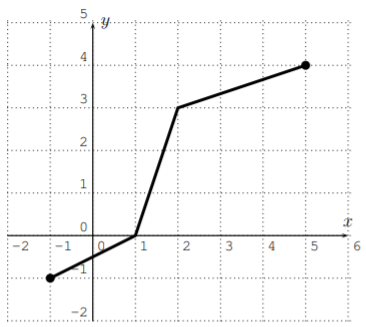

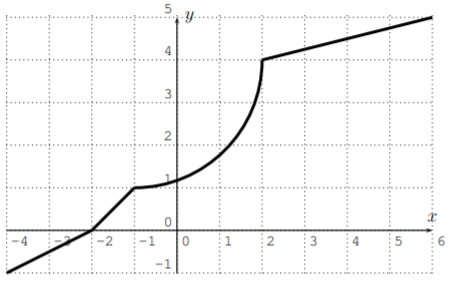
- \(f(x)=\sqrt{x}\)
- \(f(x)=x^3-4\)
- \(f(x)=2x-4\)
- \(f(x)=2^x\)
- \(f(x)=\dfrac{1}{x-2}\) for \(x>2\)
- \(f(x)=\dfrac{1}{x-2}\) for \(x<2\)
- Answer
-



